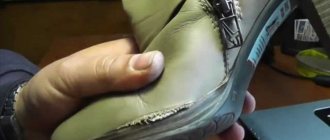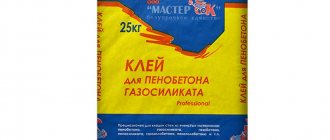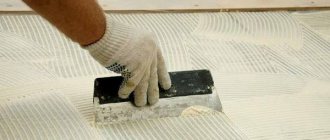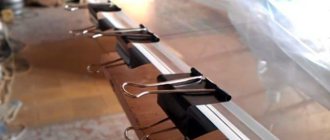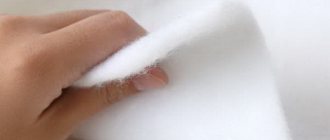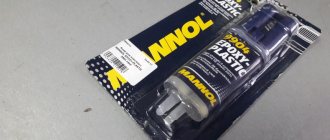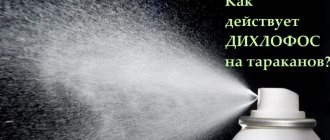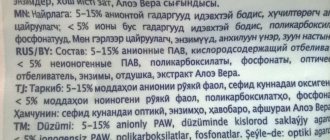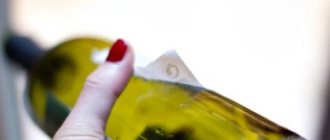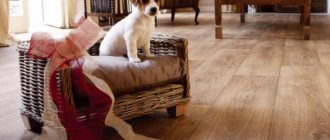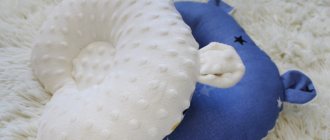Polyvinyl chloride is widely used for the production of building materials, sewage systems; boats and camping equipment are made from PVC. A good PVC adhesive does not lose its properties for several years, is not affected by moisture or liquid, does not crumble, does not change color and structure.
There are two types of PVC glue:
- one-component composition, completely ready for use;
- two-component adhesive - the kit includes a separate adhesive and a separate hardener. Before use, both components are mixed.
It is clear that two-component PVC adhesive provides a stronger and more reliable seam. But one-component types are easier to use and easy to handle even for inexperienced craftsmen.
Also, when choosing a suitable adhesive for PVC fabric, film or building materials, the main factors should be taken into account:
- purpose of application – joining parts, laying PVC finishing materials, repairing inflatable boats or sports and tourist equipment;
- degree of moisture resistance;
- temperature restrictions for application and use;
- adhesion to various surfaces;
- plasticity of the composition, ease of application on various surfaces.
Adhesive for PVC boats and fabric. What is the best glue for PVC?
If you have a boat made of PVC, then during operation it may require repairs. This need is due to the possible occurrence of holes in the product. If we are talking about a small scratch, then you will need to remove the PVC surface, exposing the fabric. Next, the surface is repaired. Holes and cuts up to five centimeters can be repaired at home or on the go, all you need is a repair kit and some time. If holes have formed, the size of which varies from 5 to 15 cm, you can also eliminate them yourself, but the work will be somewhat more difficult. More significant damage should be dealt with by a specialist.
Film
PVC film is intended for cladding furniture facades, swimming pools, doors and other surfaces. At home, the only possible option is self-adhesive film. To attach such a coating using glue, you need industrial equipment - a vacuum press or a welding machine.
Thus, PVC film adhesive is used on an industrial scale in furniture manufacturing plants or construction organizations. It is selected by specialists based on the purpose, temperature conditions and gluing method. Most often, two-component compositions are used, since they have a higher heat resistance class.
What glue is best to use for PVC boats?
The glue comes in a repair kit. Quite often, compositions of the Uran or Desmakol brands are used. However, it must be remembered that the first type of mixture can soften when exposed to high temperature, and the patch may peel off. If the contents of the repair kit have been used up, then you will have to choose glue for PVC boats on the building materials market. It is necessary to purchase only those mixtures that are specifically intended for PVC. Consumers should pay attention to two types of glue that are available in stores.
Results
First of all, you need to pay attention to the quality of the glue and its properties. Cheap options do not always guarantee reliable and durable results. To fix a puncture, you need to study the instructions and follow them strictly.
In conclusion, we can draw conclusions which of the means is the best:
- In situations of small punctures and cracks, a liquid patch will be your salvation.
- If it is necessary to replace the PVC fabric, a two-component adhesive is needed to connect the patch.
- Defects in boat fittings are best corrected with a one-component product.
- It is recommended to take small travel options on the road.
- Major permanent repairs must be done using a professional two-component adhesive.
To choose an adhesive for repairing a PVC boat, you need to study the characteristics of the best compounds, as well as read user reviews.
Polychloroprene adhesive
If there is a need to repair a boat, then you can choose this one-component composition; it is specially designed for gluing inflatable boats, rubberized materials, and wetsuits. Among its positive characteristics are the qualities of water resistance, elasticity and excellent strength. After application, the composition sets quickly enough, and then is characterized by its ability to hold the seam for a long time. Considering the advantages of this composition, it is also necessary to highlight strength, as well as excellent resistance to temperature.
Master's recommendations
When choosing glue for PVC, you need to take into account the fact that experts do not recommend using Moment glue, as well as similar compounds. This is due to the fact that the strength and tightness in this case remains questionable. The durability of this material has also not been confirmed. If you still decide to use it, then if you need to apply a new composition, cleaning the surface of the boat will be very problematic. You will most likely have to apply the new mixture to the existing surface. This, of course, significantly reduces the quality of the patch.
Types of products
Currently, developers present a wide range of adhesives for PVC boats. Therefore, the buyer needs to understand the varieties and types of these products. There are two types of adhesives: one-component and two-component. The first type is most often used to repair damaged fittings:
- special fastenings for seats;
- transom;
- oarlock;
- rings
One-component adhesive mixtures have advantages. They are inexpensive and dry in a minimum amount of time. This composition is convenient to take with you on a hike. The fast drying time is very practical. The main disadvantage is that this product is not suitable for patching the hull of a boat.
Two-component adhesives are slightly more expensive. They have the following positive properties:
- tolerate temperature differences well;
- their elasticity is at a high level;
- glued surfaces can be used for a long period of time.
Many manufacturers make two-component mixtures specifically for PVC material. This glue will reliably fasten any fittings, small punctures and large cuts on the body of the inflatable floating device.
Composition of the brand Bostik Vinycol 1520
This glue is made on the basis of polyurethane, to which wax and an organic solvent are added. Application can be done with a brush, and drying occurs quite quickly. After the vulcanization stage, this PVC adhesive will be characterized by high resistance to water and humidity. It is specially designed for repairing inflatable boats.
Characteristics of "Vinicola 1520"
If you are thinking about the question of which adhesive for PVC is better, you should consider the characteristics of Vinicola 1520.
The composition has a semi-viscous consistency and a transparent color. During use, you will notice the dominant odor of ketones. Polyurethane acts as an adhesive agent. A mixture of components is used as solvents. Viscosity is approximately 2600 mPa.s. The dry residue makes up about 20% of the mass. Density can vary within 0.82, but this indicator can change in both directions by 0.02. The coverage area is 4 square meters per 1 liter. However, this indicator can be changed depending on the type of material being glued. In order to remove drops of glue from the surface being treated, you should use “Bostik Cleaner M501”. The same composition should be used to clean working tools, as well as equipment. When using the composition, it is necessary to take into account its flammability.
Common Mistakes
Not only newbies, but also experienced truck drivers make mistakes. The most common things truckers do wrong are:
- Rollers without non-stick coating are used for work. Such tools stick to the patch and damage the joint.
- Construction heat guns are used. These devices are not intended for use with suspended structures. By using a heat gun, you can disrupt the geometry of the fabric, which will lead to forced replacement of the entire awning.
- They heat it with a hairdryer for too long. If you overheat the patch, it will lose its strength and the material will begin to melt. The result of such an error is the reappearance of the slot on the canvas.
- Using the wrong adhesive. Choosing a coupling solution is not the easiest task. It must be suitable specifically for the material from which the awning is made. Some people try to attach the patch to simple adhesives, which is absolutely not possible.
- They begin work without doing the stitching with nylon thread. The damaged area must be stitched so that a piece of fabric does not come off due to external factors or become displaced.
- They work without gloves or other personal protective equipment. Also, many try to eliminate the defect in an unventilated garage, where they breathe in toxins harmful to the body.
Heat resistance
If you decide to use the described adhesive for PVC boats for repairs, then you need to know that the composition is able to maintain its characteristics after application under conditions characterized by a thermometer mark of up to +90 degrees. The seam is very resistant to water, oils, gasoline and kerosene. However, it is necessary to ensure that the composition does not constantly come into contact with these substances. As a rule, the adhesive does not change color, and in the case of thin PVC materials, a slight change in shade may still occur under extreme conditions. This also applies to exposure to direct sunlight. If you need to choose the best glue for PVC, then you can prefer the described composition. Consumers are quite often interested in such a characteristic as peel resistance. Twenty-four hours after application at normal ambient temperature, this figure is 10 daN/5 cm. After seven days under the same conditions, the tensile strength doubles.
Adhesive installation of polyvinyl chloride pipes
Glue for PVC pipes and fittings is also called cold welding, and not by chance, because it distributes the load, which increases strength and extends the service life of the pipeline to the same extent as it ensures the connection of elements by real welding. PVC pipe adhesive creates a polymer splitting reaction in solvents. After the pipe walls have softened, a fitting with softened walls is attached to them. This process is also called chemical welding.
In this case, it is worth considering one feature. Due to the fact that the chemical properties of additives and solvents vary, the choice of adhesive for PVC pipes must be made taking into account the thermoplastic compounds being welded. As a rule, companies producing plastic pipes offer instructions on the optimal solution to this issue. Be that as it may, it is worth remembering that when joining parts made of chlorinated polyvinyl chloride (CPVC) and regular PVC, you need to use different brands of glue.
The use of glue for PVC sewer pipes is considered a fairly popular method, which ensures excellent tightness of the finished structure.
Remember that uneven coating of pipes with glue or the presence of a large number of irregularities can cause partial glue failure. Complete non-gluing may also occur - this happens when both layers of glue dry out. Please note that you only have a few minutes to complete the connection operation.
The appearance of a soft adhesive layer is caused by a low ambient temperature or by allowing a small amount of time for hardening.
The layer may become porous - this happens when the adhesive layer is enriched with air due to poor mixing of the components.
Features of use
If you purchased glue for PVC fabrics, it is important to know how to use it. Only in this case will its composition demonstrate all its best characteristics. Application should be made in an even layer on both surfaces using a brush. For the first coating, it is necessary to allow the glue to dry for ten minutes; for the second coating, the time interval increases to twenty minutes. Do not exceed the maximum open time after application, which is 30 minutes. Once connected, the parts to be glued can no longer be moved. If you use glue for PVC fabric, then during the repair work you need to make sure that air does not get into the adhesive seam.
Panels
PVC panels have become widespread due to their sufficient strength, water resistance, resistance to temperature changes, and low cost. The fastening of such a facing coating is carried out not only with glue, but also mechanically on the sheathing. The adhesive method is used when the base is level and without any defects.
The main properties of the glue in this case are resistance to temperature changes, moisture resistance, and excellent viscosity. Most often, liquid nails, Moment-Montazh or Titanium are used to fasten panels.
Personal experience in gluing PVC
Let's start from the end - the glue in the kit can be native (which is used in production) or not at all native, but any glue for PVC. Next, during production, PVC is glued with two-component adhesives or welded.
We will not consider welding, but will deal with glue (for specific names of adhesives, see below in the text of the gluing description). During production, a second component is added to the glue - a hardener. It is this that gives strength to the adhesive seam and prevents it from “flowing” when heated. However, unlike the glue itself, it is not stored for a long time and is sold in canisters of 10-20 liters, but you only need a drop of it. Under production conditions, this hardener wears out quickly, but in “home” conditions the chance of using it is very small - many people have been sailing on boats for years and don’t remember about repair kits. In short, they don’t give it as part of the repair kit.
First gluing method
Surfaces are thoroughly washed and degreased. Acetone is ideal for degreasing - it not only degreases but also slightly dissolves/softens PVC, however, due to its volatility, it does not last long. So, don’t rub it fanatically, otherwise you can wash off the top layer of PVC.
The first layer of glue is applied to the balloon and the patch. Wait 15-20 minutes. The second layer is applied to both surfaces. Wait another 20 minutes to dry. And you don’t have to be afraid that the glue dried in 5 minutes and after 10 it stopped sticking to your finger when you tried it - as soon as you put a patch on the balloon, it will stick and tear it off will be extremely difficult, pellets will form and you will have to Carefully remove the glue and begin the whole process from the beginning. So you need to apply the patch very carefully and without distortions. In general, this pause can easily be extended to 40-50 minutes (I managed to go to the store and buy spare parts for the car). Even if during this time the glue has dried out so much that it has stopped sticking on its own, it’s not scary. We put the patch in place.
And now the most IMPORTANT thing is that you need to press the gluing area well and warm it up to 100-120 degrees for a few minutes. In “stationary” conditions, I use a hair dryer with step-by-step temperature control (10-degree steps from 60 to 600) and a roller for rolling a patch; in outdoor conditions, you can use the bottom m metal mug with boiling water poured into it. Naturally, the gluing site should be on a flat surface (the balloon is deflated); in such conditions, a can from a boat (seat/bench) is perfect for this.
Next, it would be good to wait a day before using it, at least a couple of hours when leaving, and only then inflate it.
With this method, the patch holds quite firmly and if you don’t pump it and don’t overheat it in the sun, it can last for more than one year.
